Equine First-Aid Kit for Minor Injuries and Acute Wound-Care
Take a look inside Rood & Riddle Equine Hospital’s vet-recommended equine first-aid kit for minor wounds.
Share
ADVERTISEMENT
Horses getting hurt usually isn’t a question of “if,” but rather “when.” Preparation is key, so we went to the team at Rood & Riddle Equine Hospital in Lexington, Ky., to find out what’s needed in a first-aid kit to treat minor wounds and injuries.
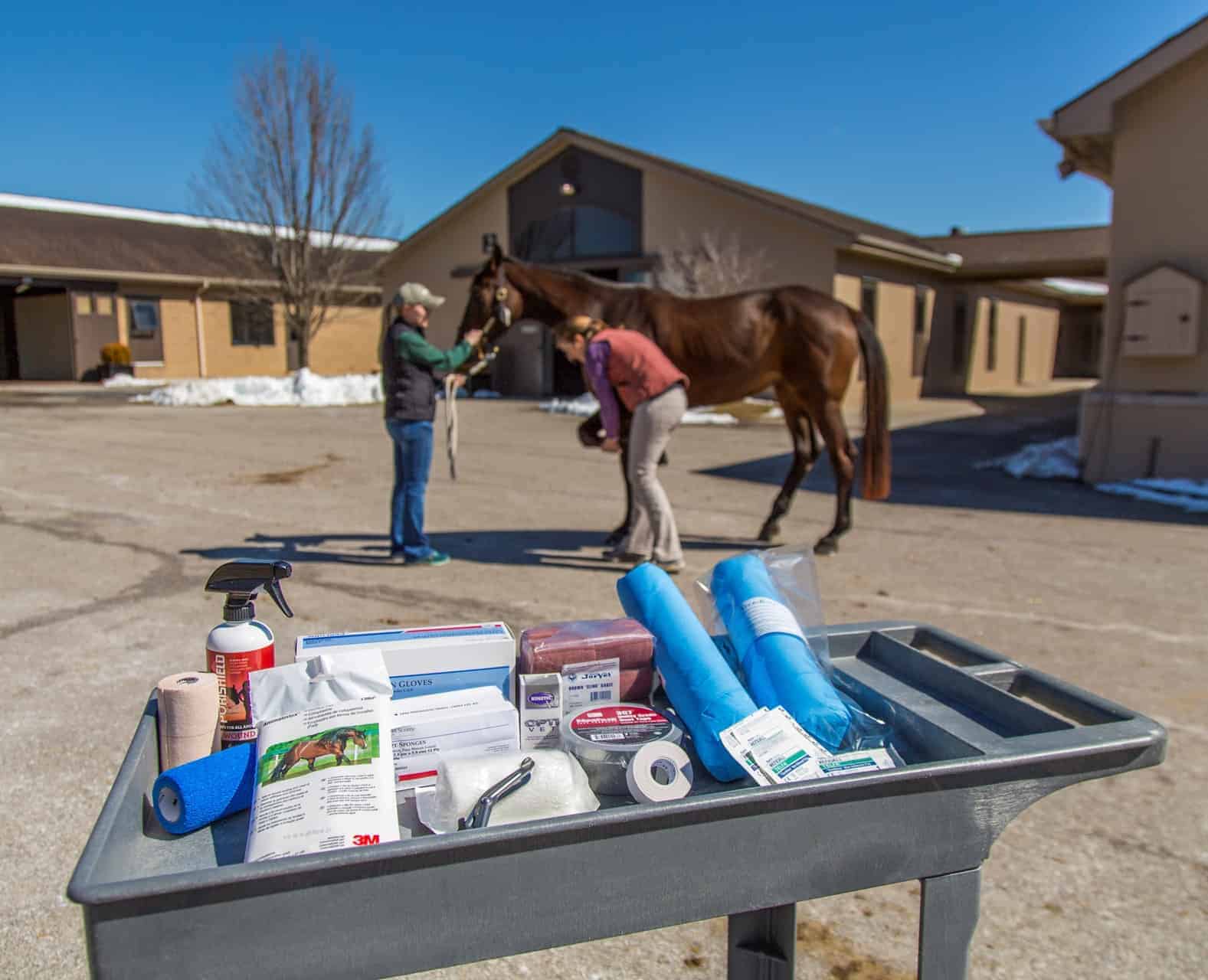
First-Aid Kit
Keep a well-stocked and comprehensive first-aid kit for wound care so you'll have everything on hand before and after your vet visits the next time your horse sustains an acute injury or gets a hoof abscess. | Photo: Kevin Thompson/The Horse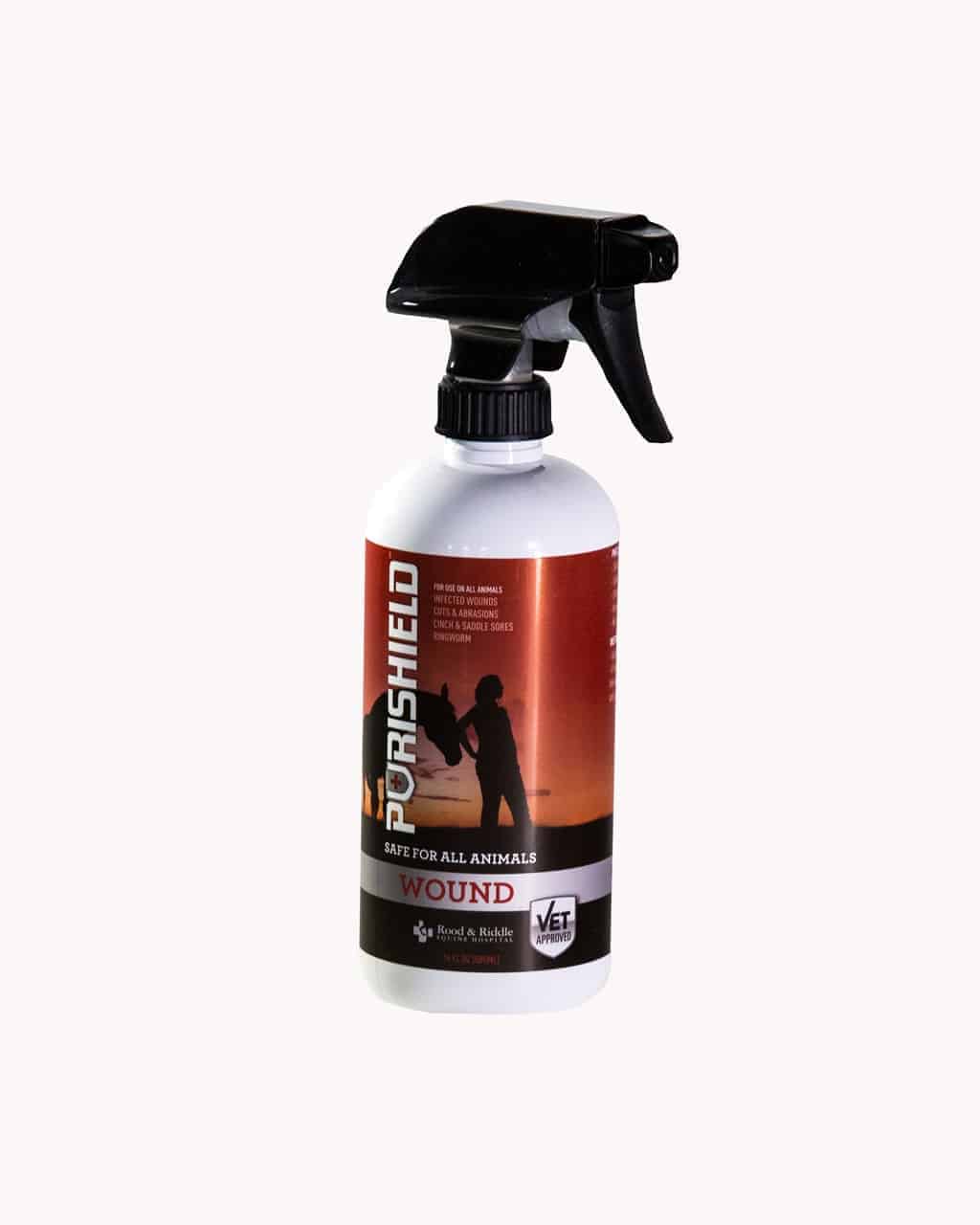
Antimicrobial Wound Spray
Antimicrobial wound spray is a topical solution used to prevent and manage infection of minor wounds and abrasions and promote healing. | Photo: Kevin Thompson/The Horse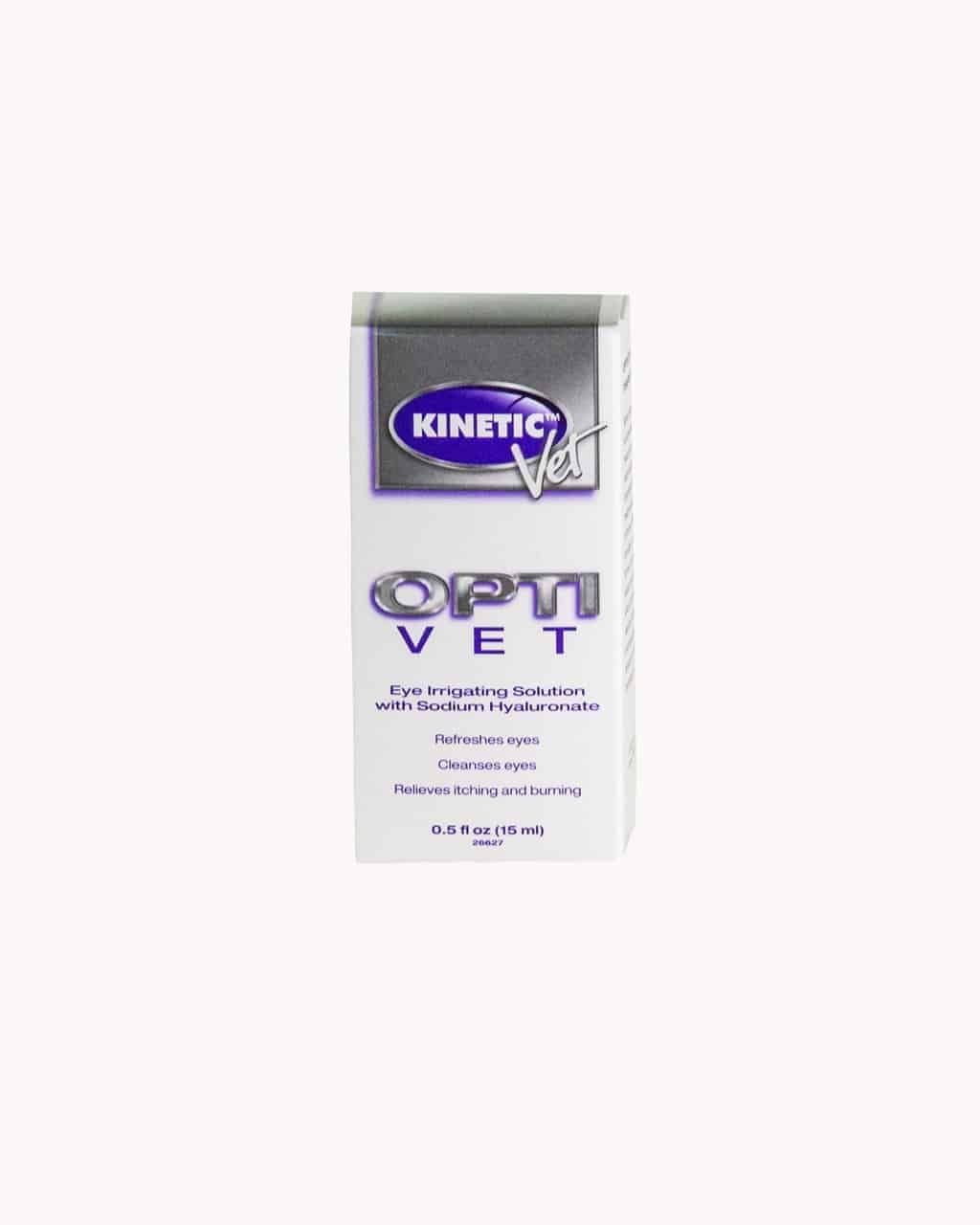
Eye Irrigation Solution
Eye irrigation solution is used to bathe and cleanse the eye, which can relieve discomfort, itching, stinging, and burning. | Photo: Kevin Thompson/The Horse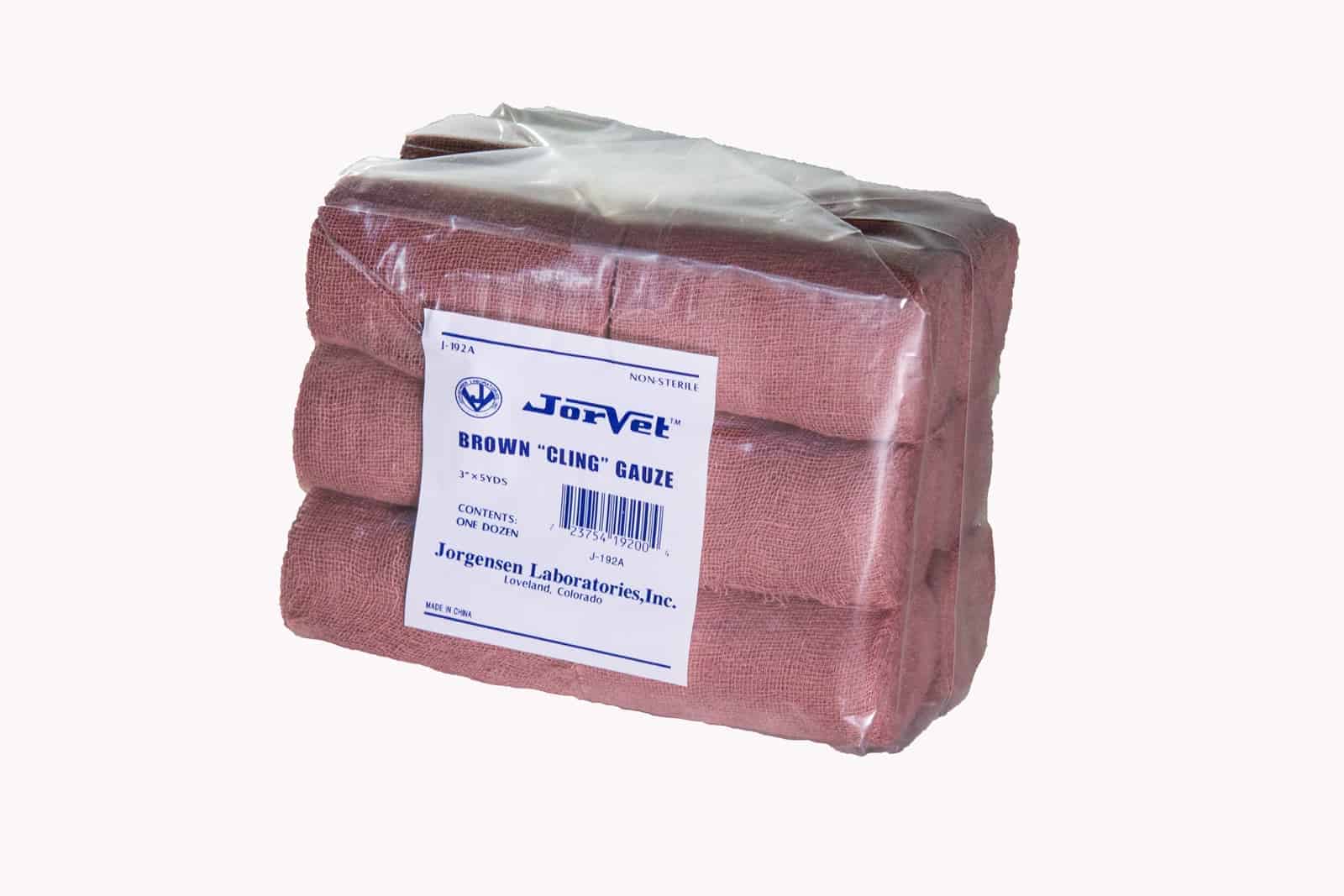
Brown Gauze
Nonstretching packaged brown gauze helps underlying bandaging materials in place. | Photo: Kevin Thompson/The Horse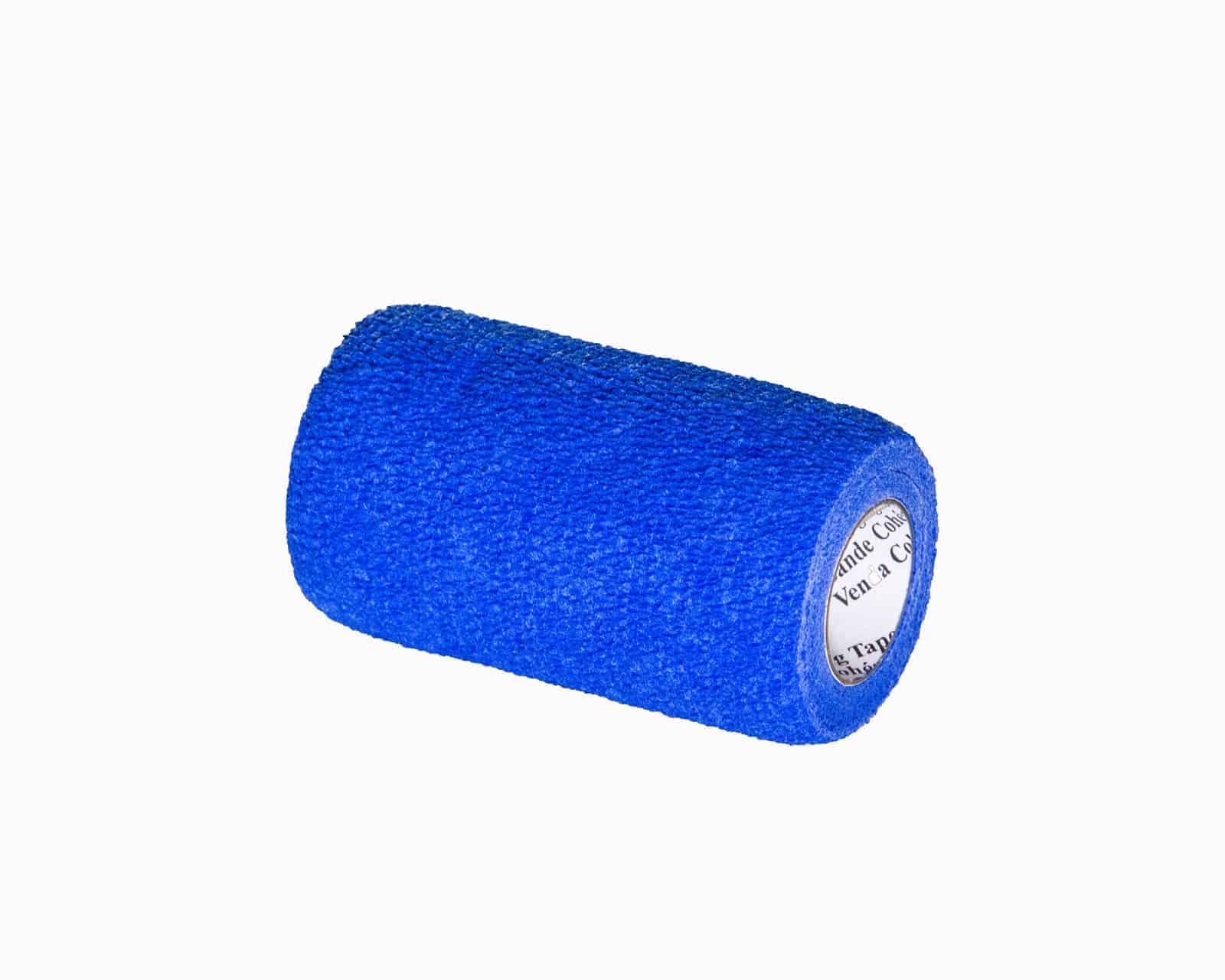
Self-Adhering Wrap
Self-adhering wrap sticks to itself but not to other surfaces--including a horse’s hair coat--and doesn’t stretch once in place, which makes it ideal for securing bandaging materials. | Photo: Kevin Thompson/The Horse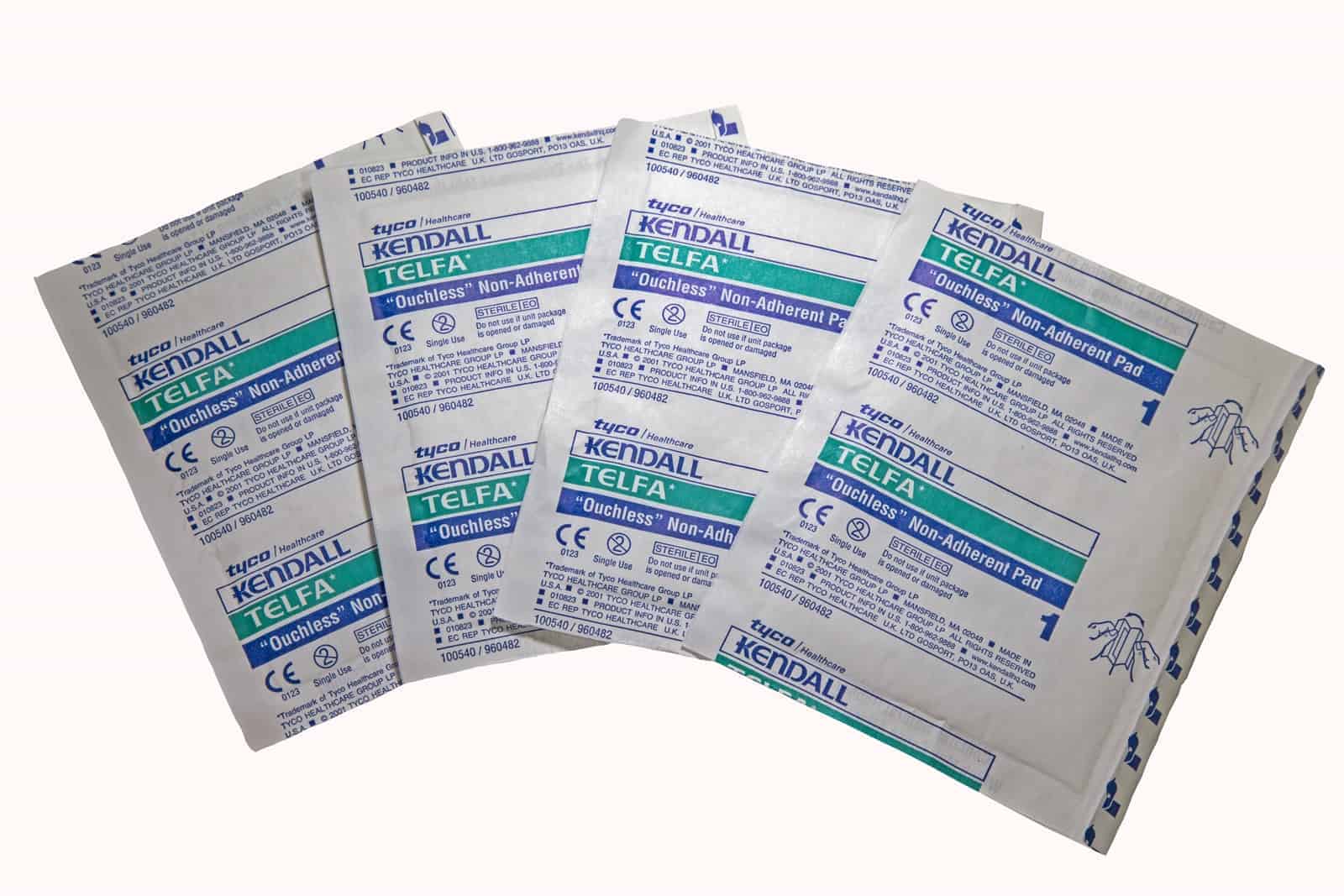
Telfa Non-Adherent Pads
Used as a dressing, Telfa non-adherent pads won’t stick to wounds. | Photo: Kevin Thompson/The Horse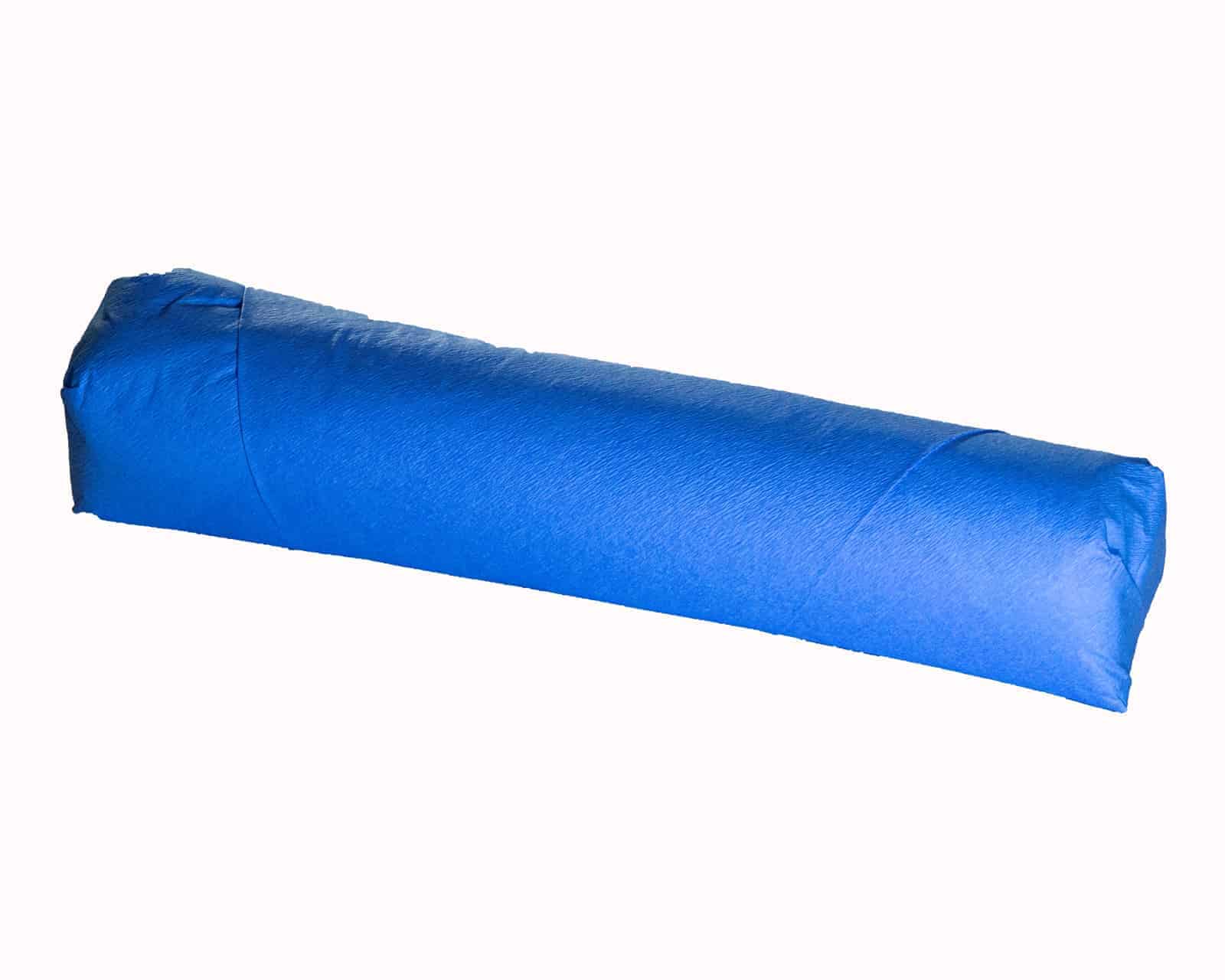
Sterile Combine Rolls
Sterile combine rolls, made of cotton, offer a protective layer to bandages and are highly absorbent. | Photo: Kevin Thompson/The Horse
Gauze Pads
Package gauze pads are used for dressing wounds. | Photo: Kevin Thompson/The Horse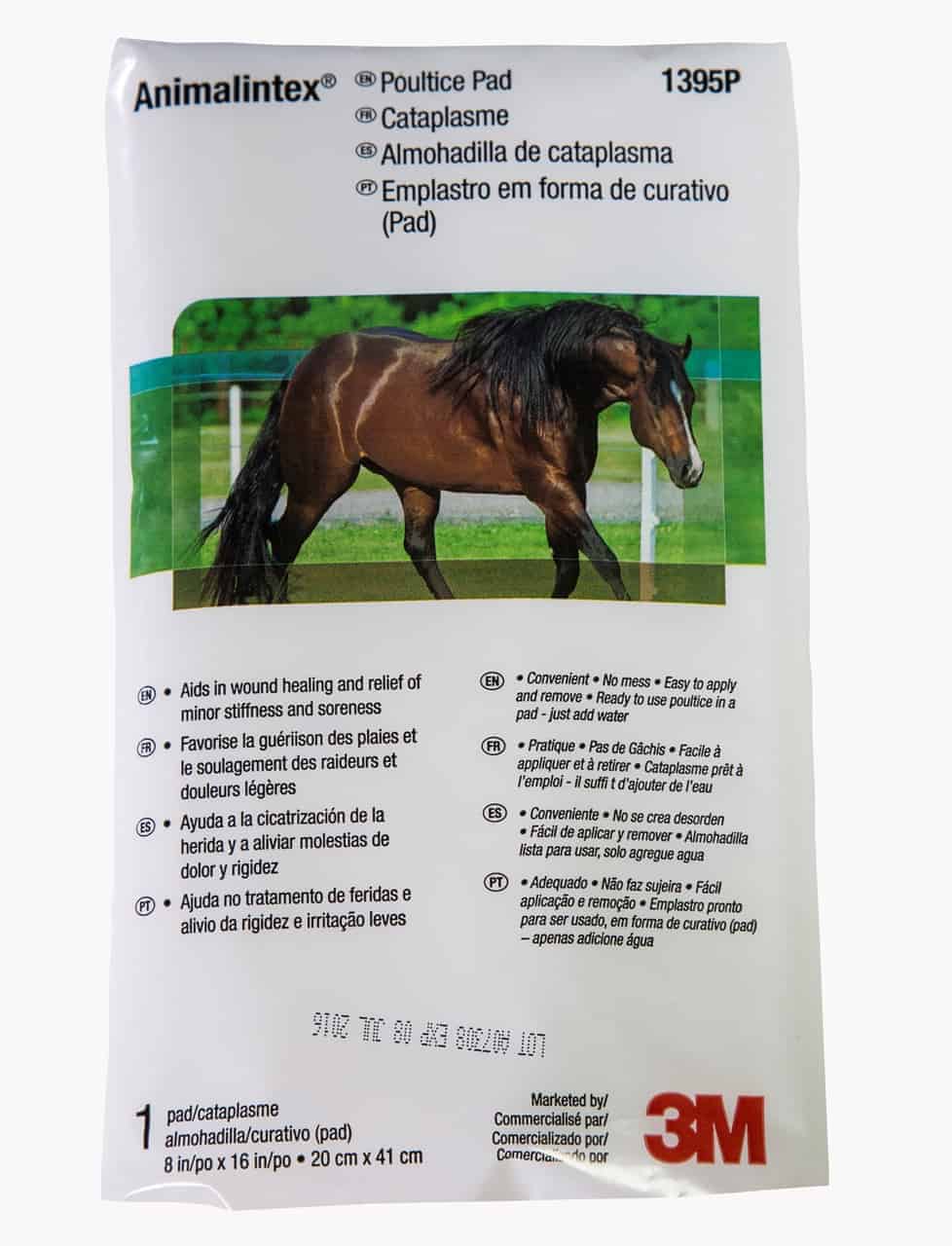
Poultice
Poultice helps draw out inflammation and infection and is especially useful for hoof abscesses. The pictured product, Animalintex, is a dry pad that is saturated with water before use. A variety of poultices are available, many wet. | Photo: Kevin Thompson/The Horse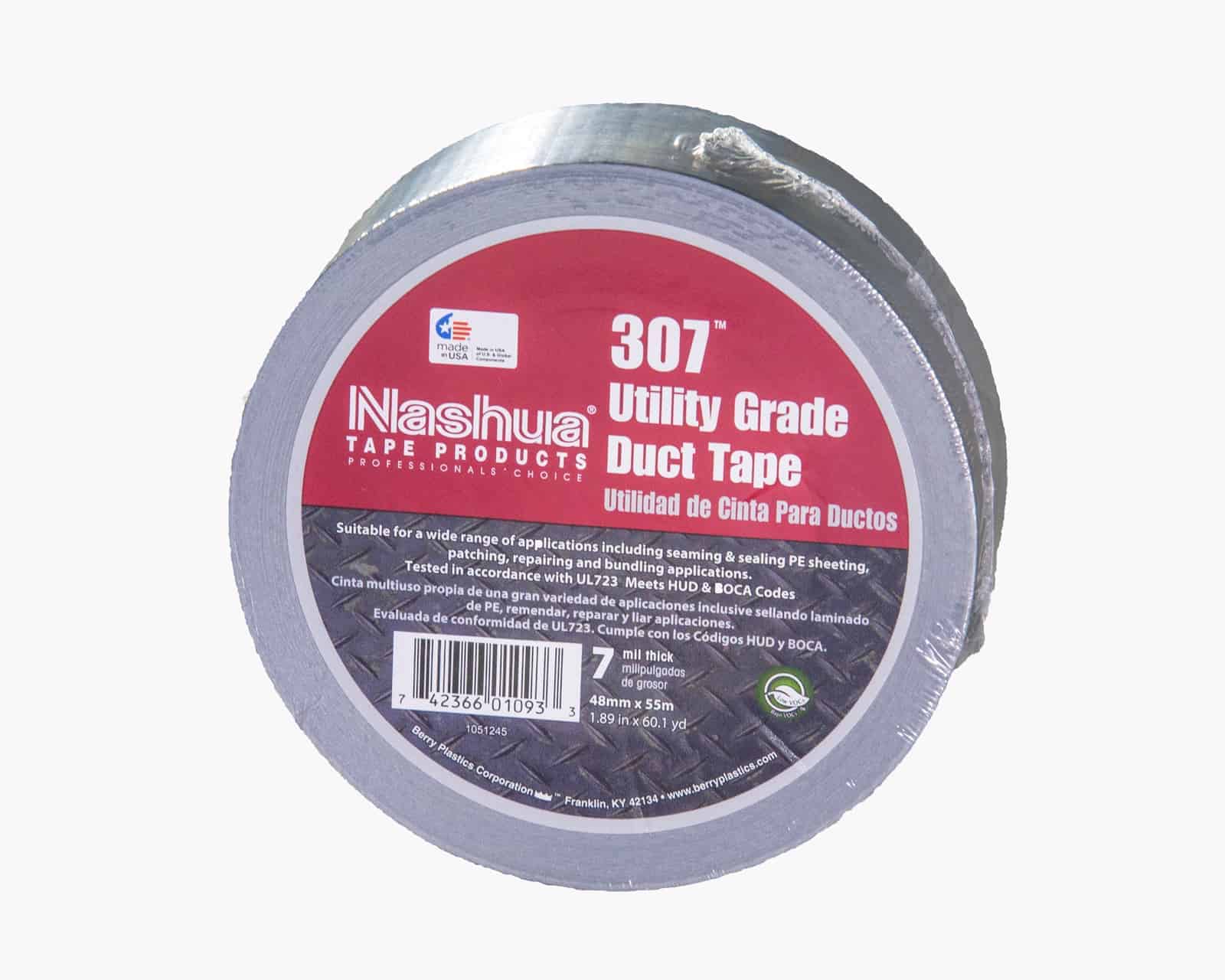
Duct Tape
A versatile and durable adhesive, duct tape makes an excellent final protective layer for hoof bandages. | Photo: Kevin Thompson/The Horse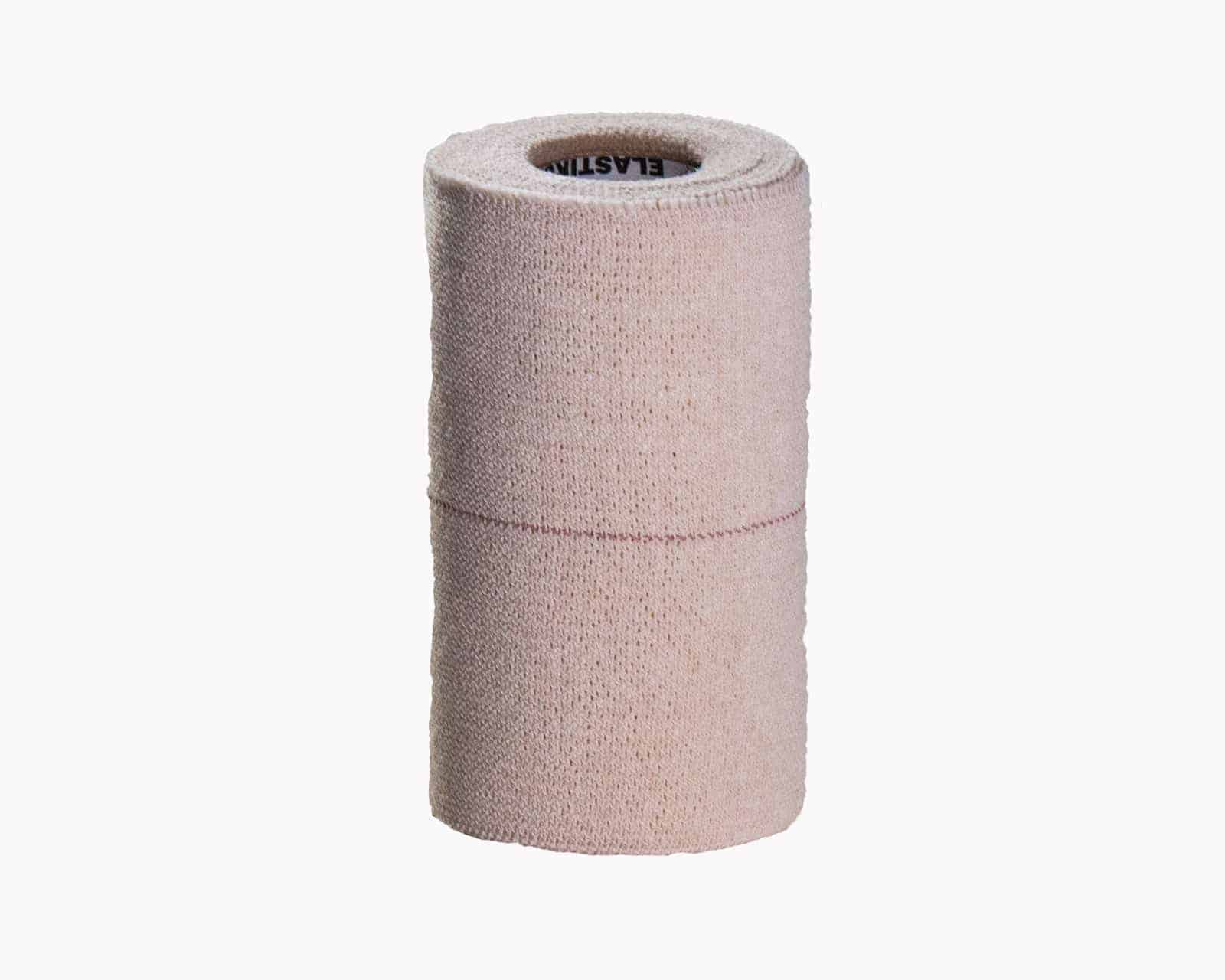
Elastikon
Elastikon is a porous elastic adhesive tape that allows skin to breathe and stretches around uneven surfaces--think knees, hocks, and hooves. | Photo: Kevin Thompson/The Horse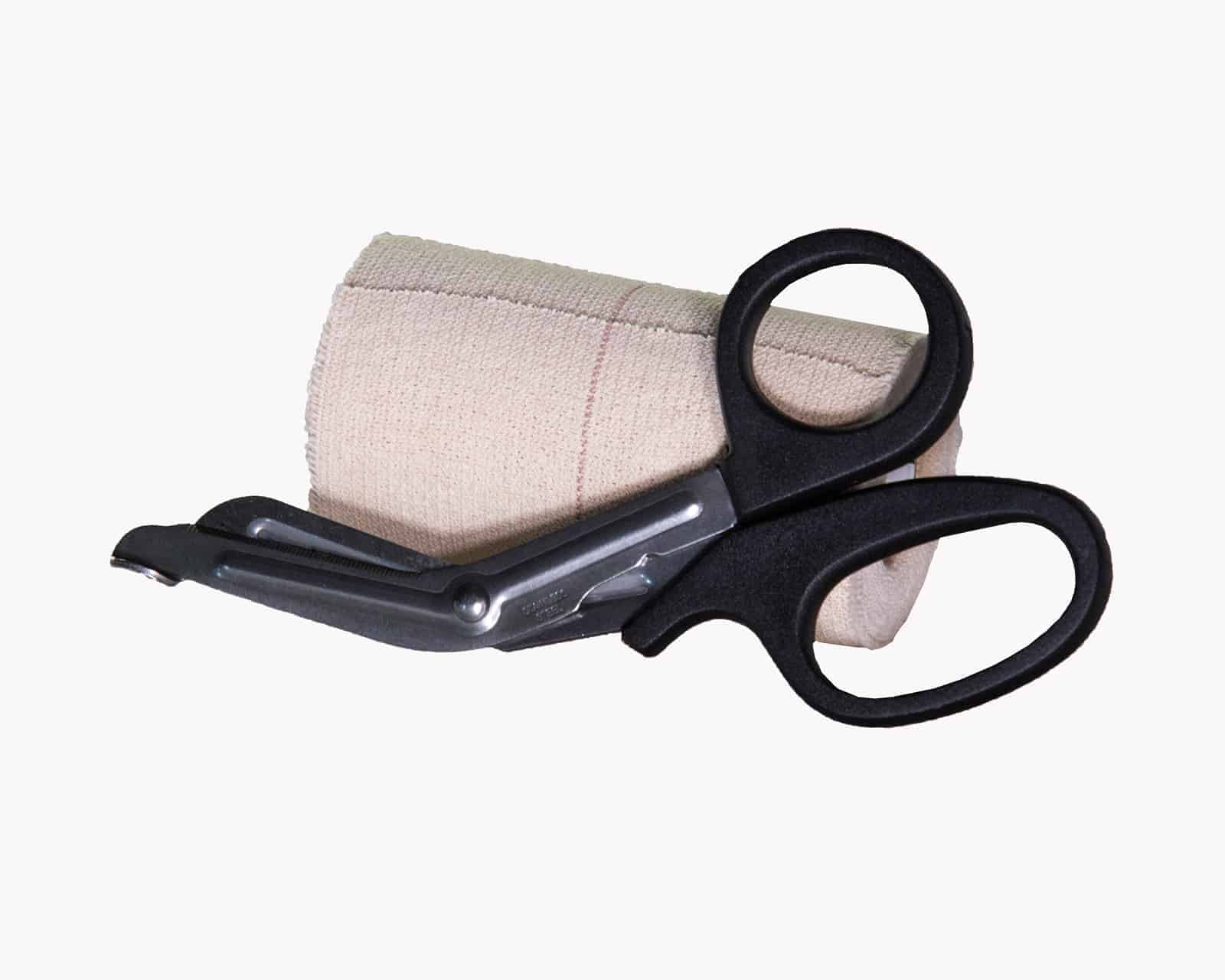
Bandage Scissors
The blunt tips and handle angle of bandage scissors are useful for safely removing disposable dressings and wraps. | Photo: Kevin Thompson/The Horse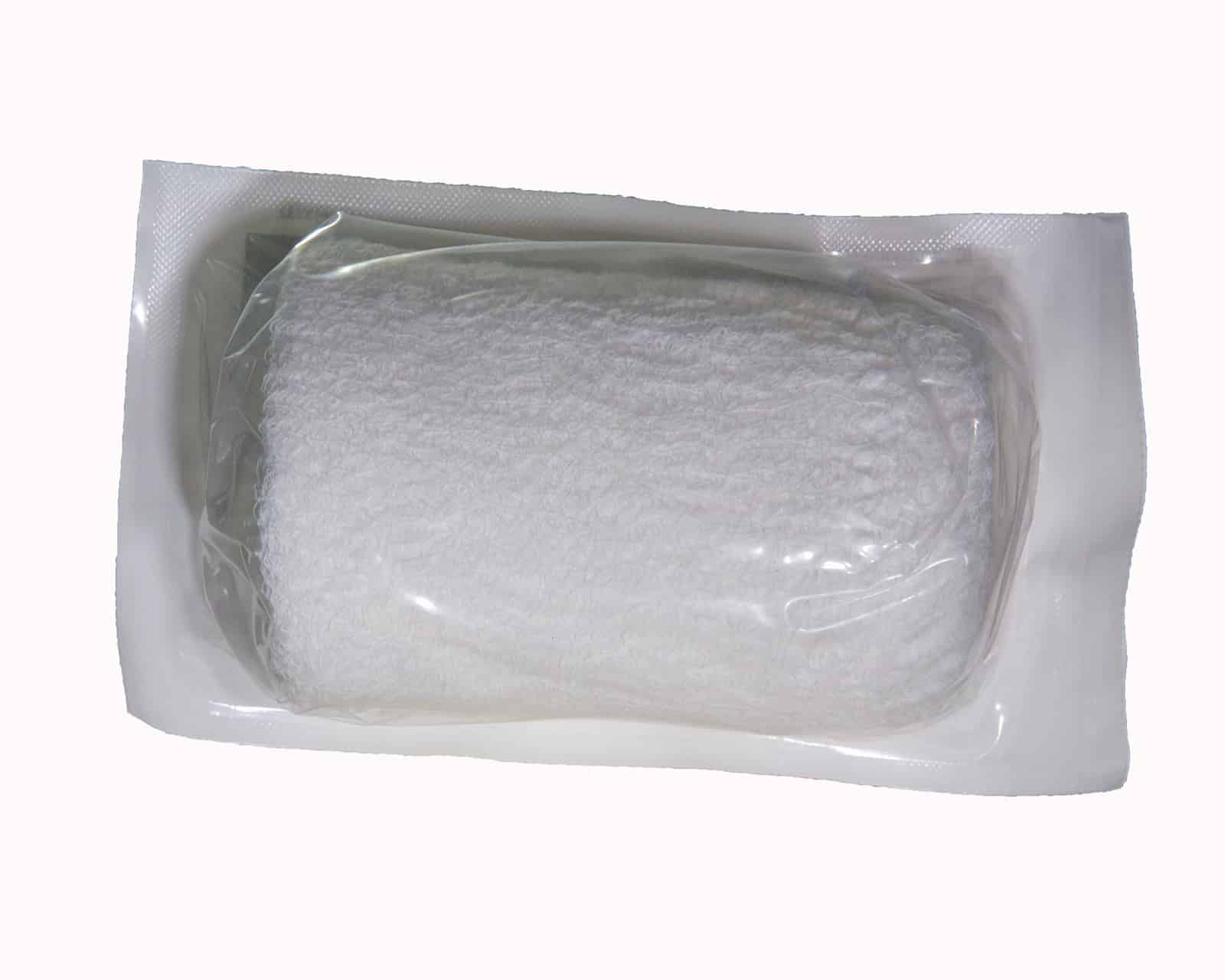
Antimicrobial Bandage Roll
In addition to being highly absorbent dressings, antimicrobial bandages fight germs to treat and prevent infection. | Photo: Kevin Thompson/The Horse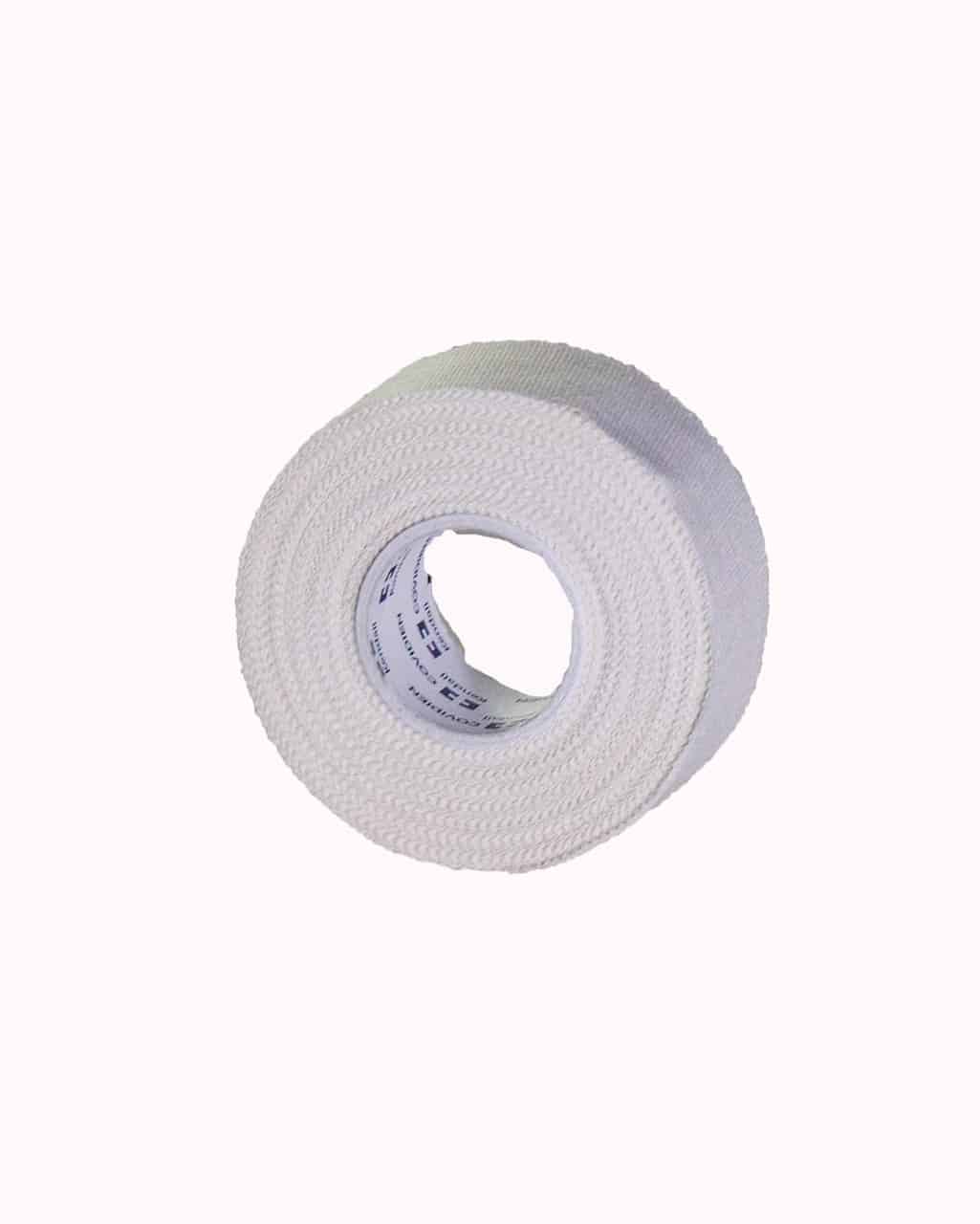
Porous Tape
Porous tape that allows skin to breathe is used for securing bandages. | Photo: Kevin Thompson/The Horse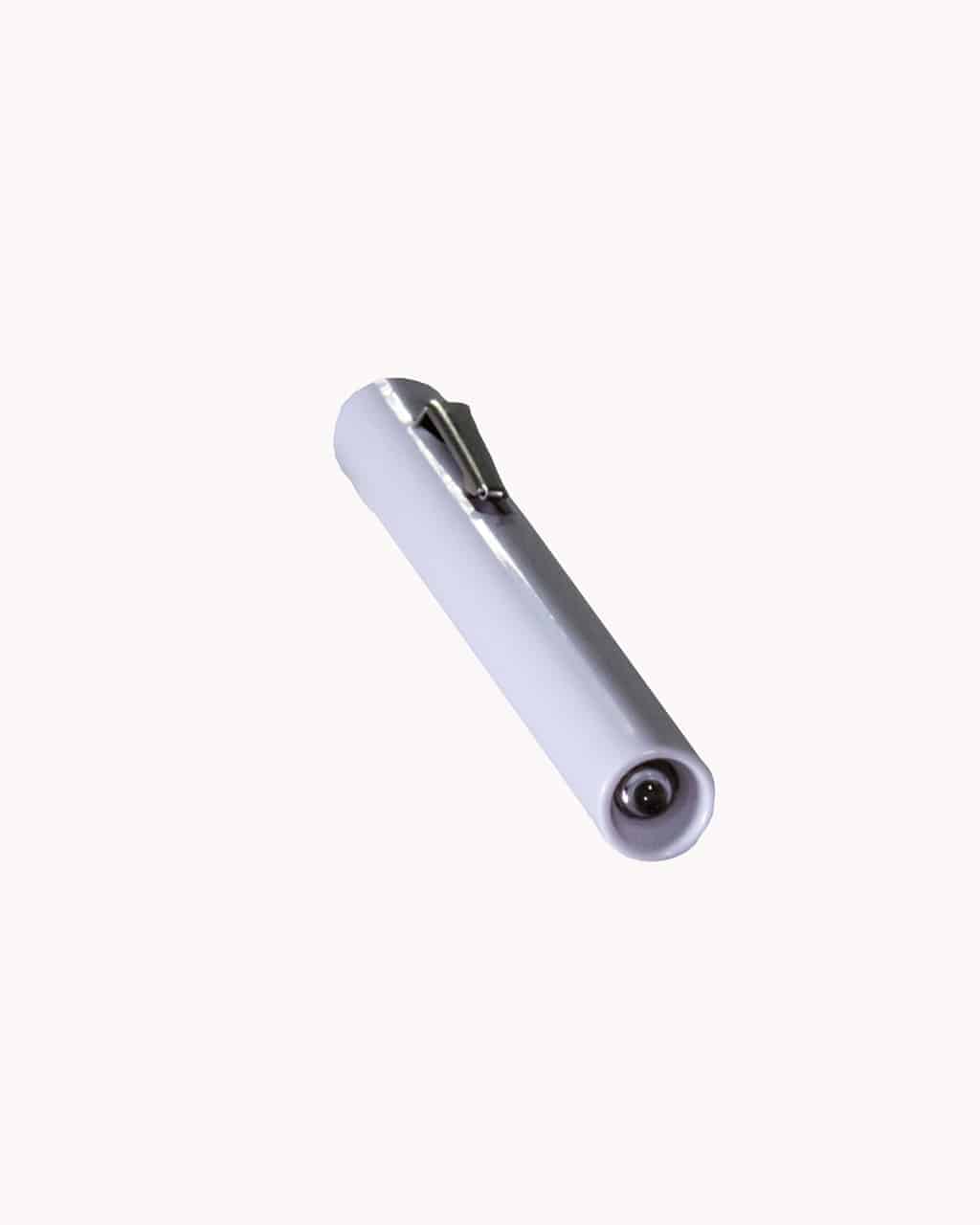
Penlight
A penlight provides extra illumination for inspecting equine injuries. | Photo: Kevin Thompson/The Horse
Rectal Thermometer
A rectal thermometer is a necessary tool for monitoring your horse's temperature in case of infection. | Photo: Anne M. Eberhardt/The Horse
Share

The Horse: Your Guide To Equine Health Care is an equine publication providing the latest news and information on the health, care, welfare, and management of all equids.
Related Articles
Stay on top of the most recent Horse Health news with

















